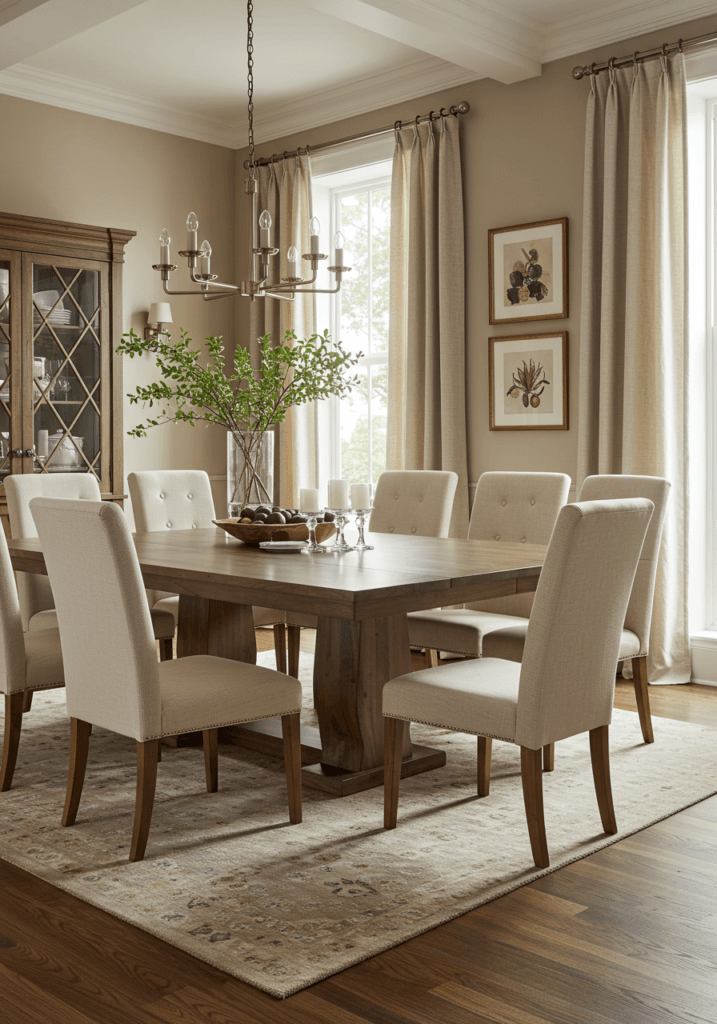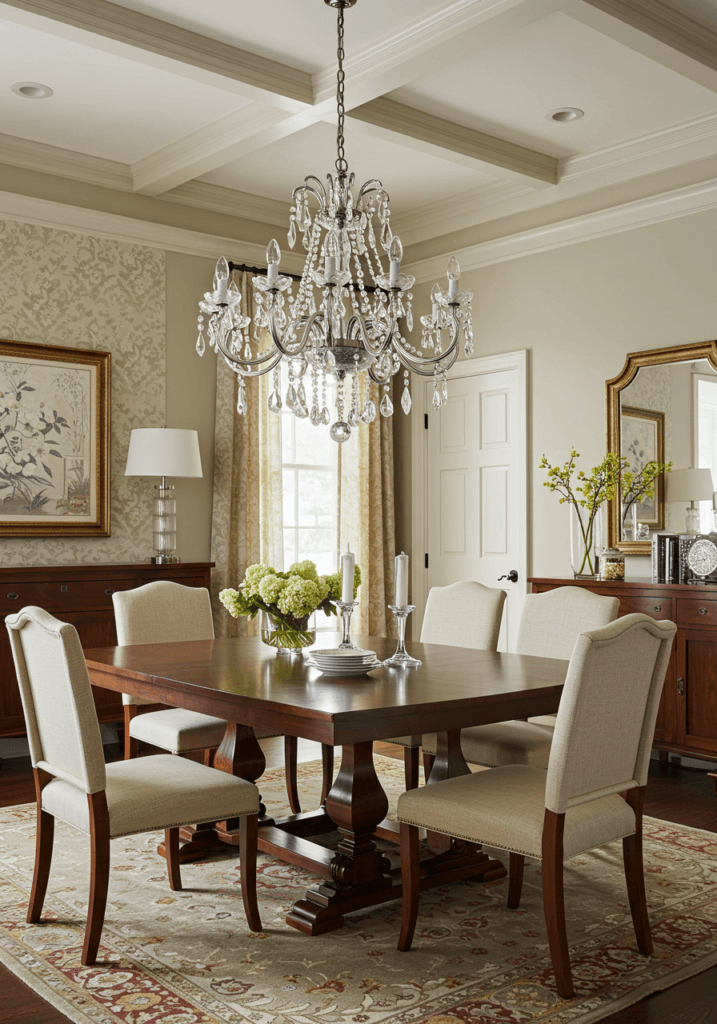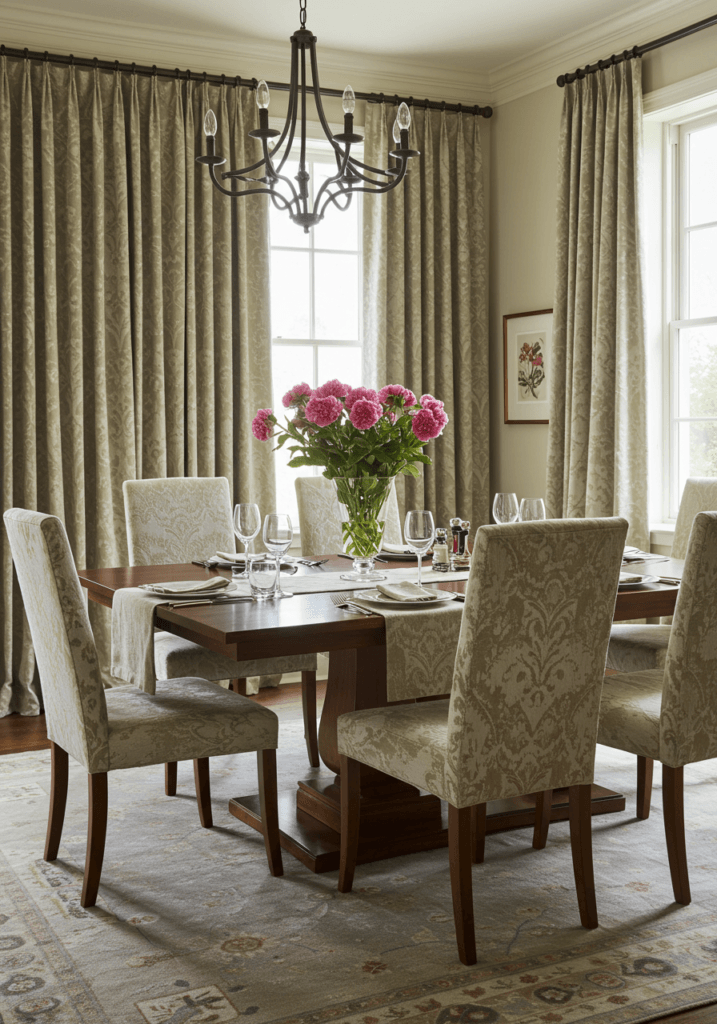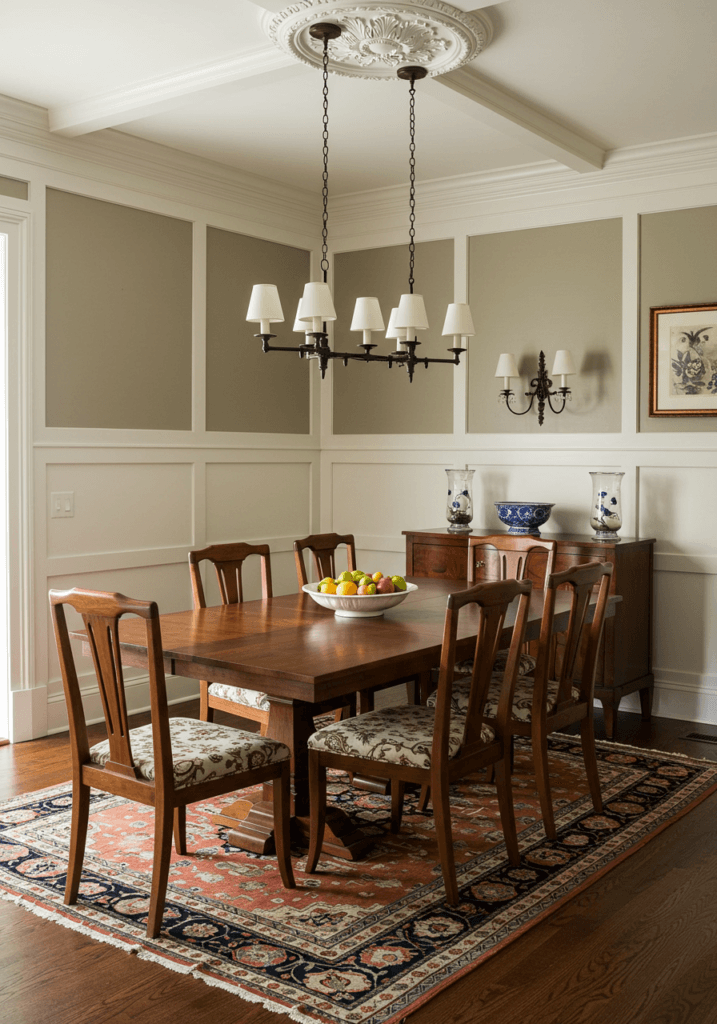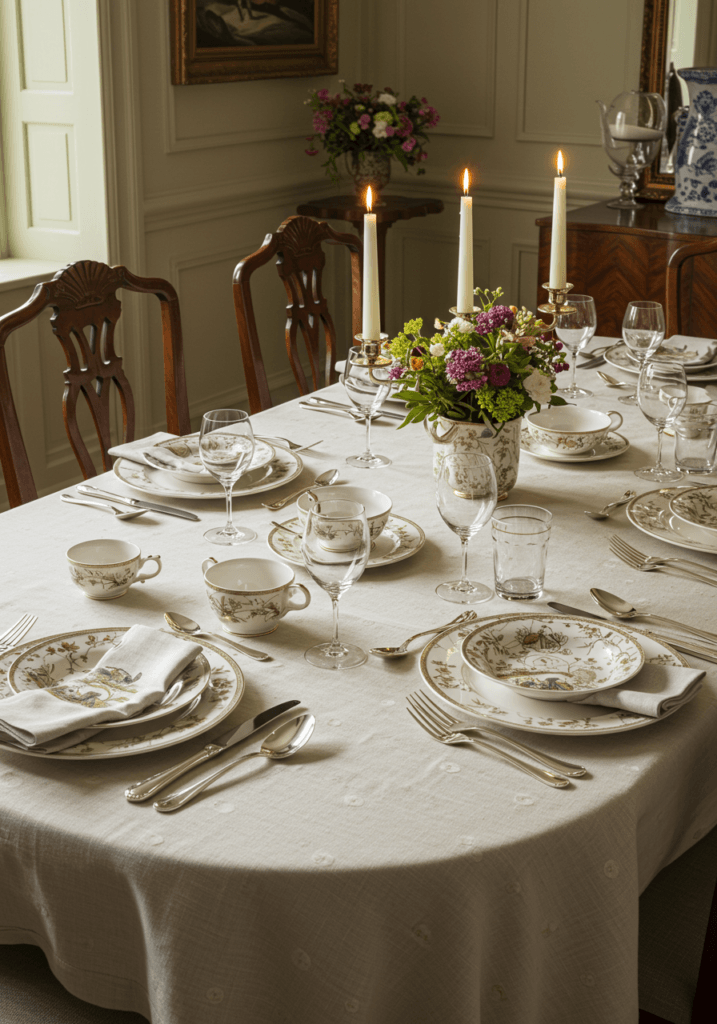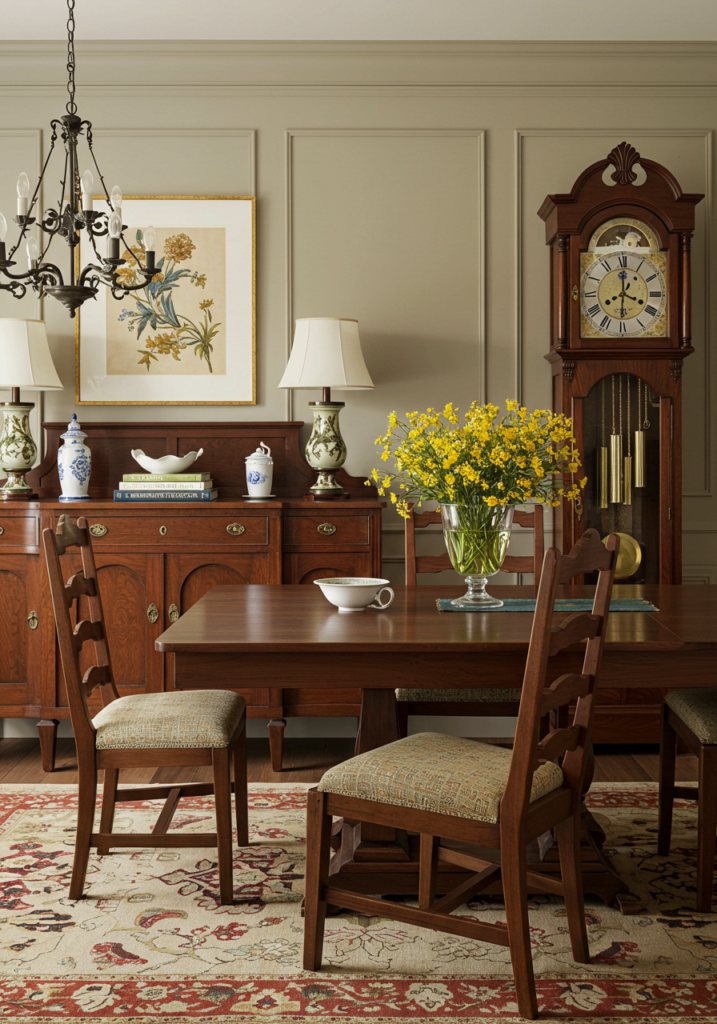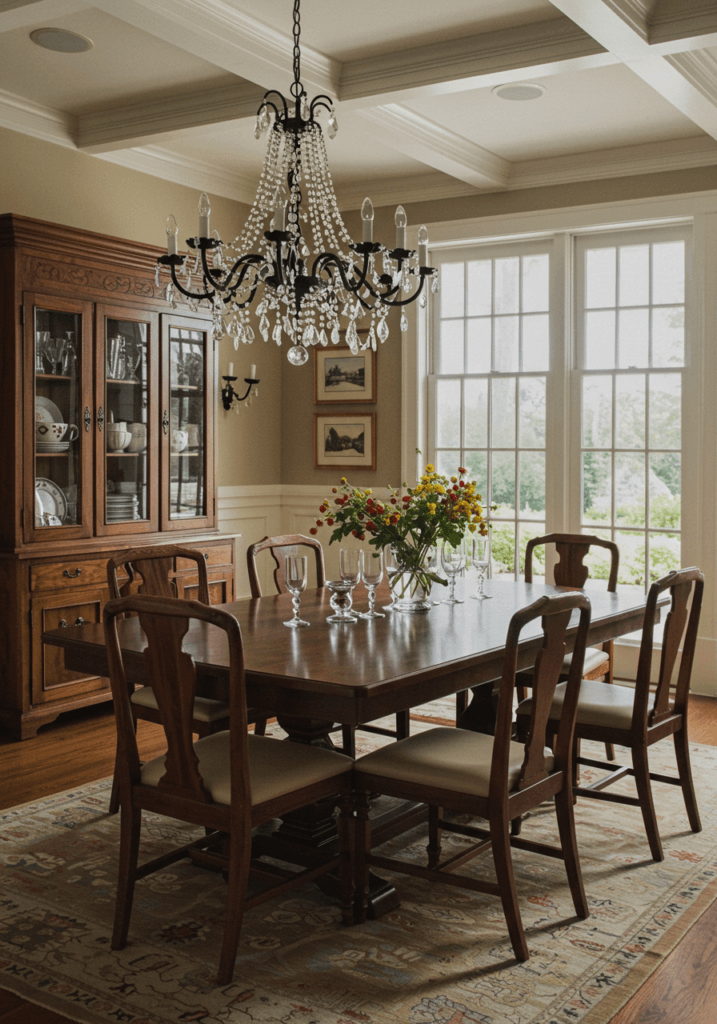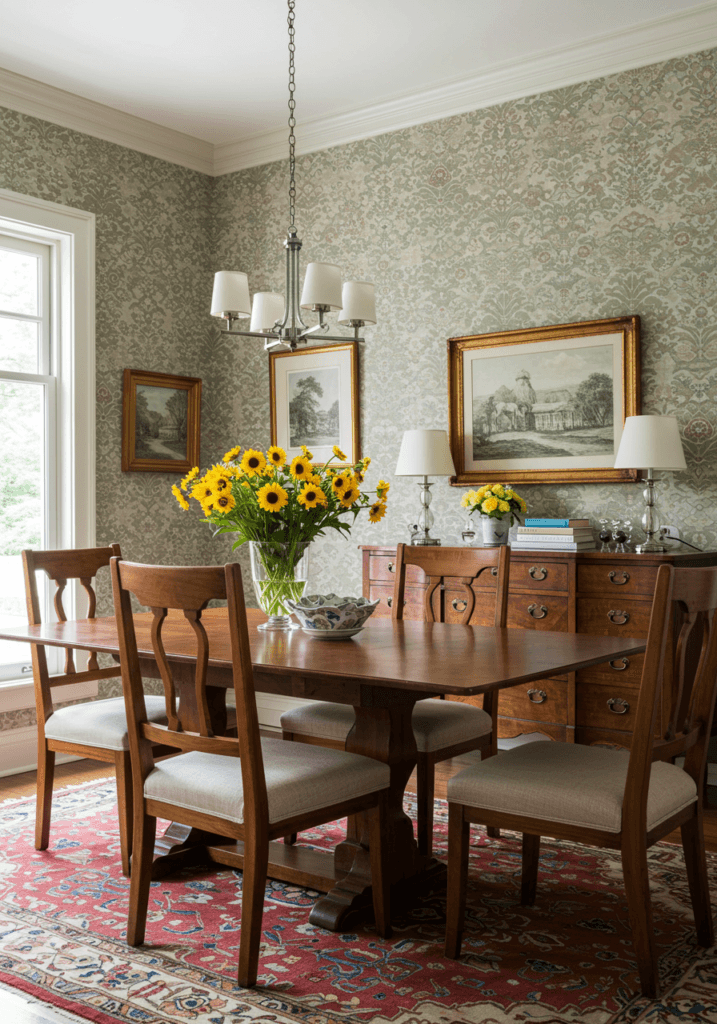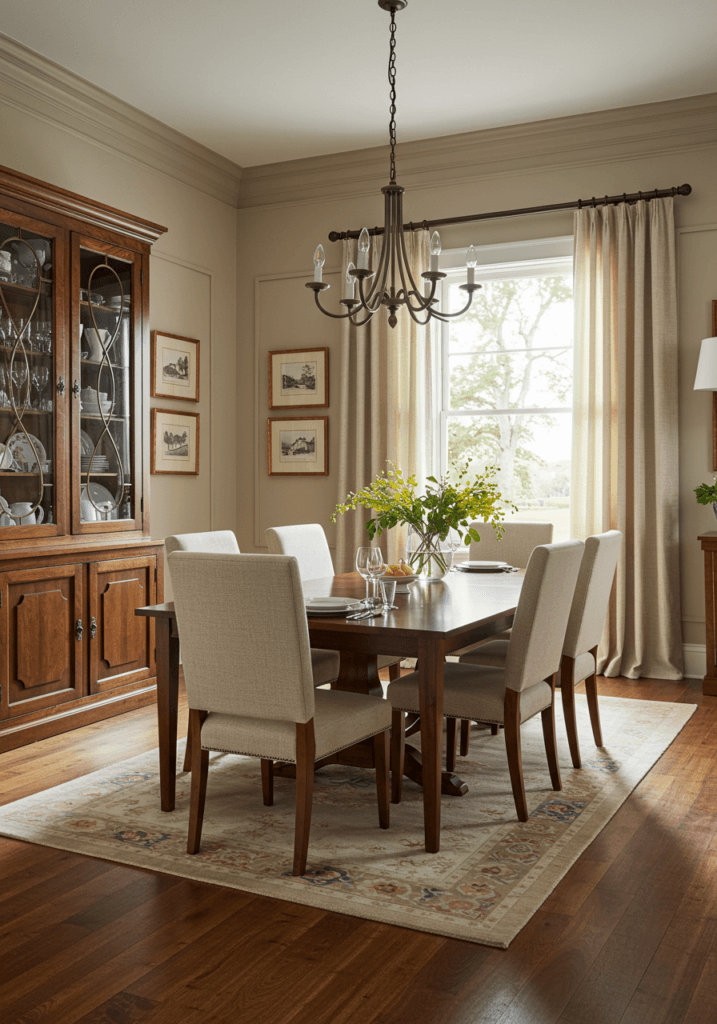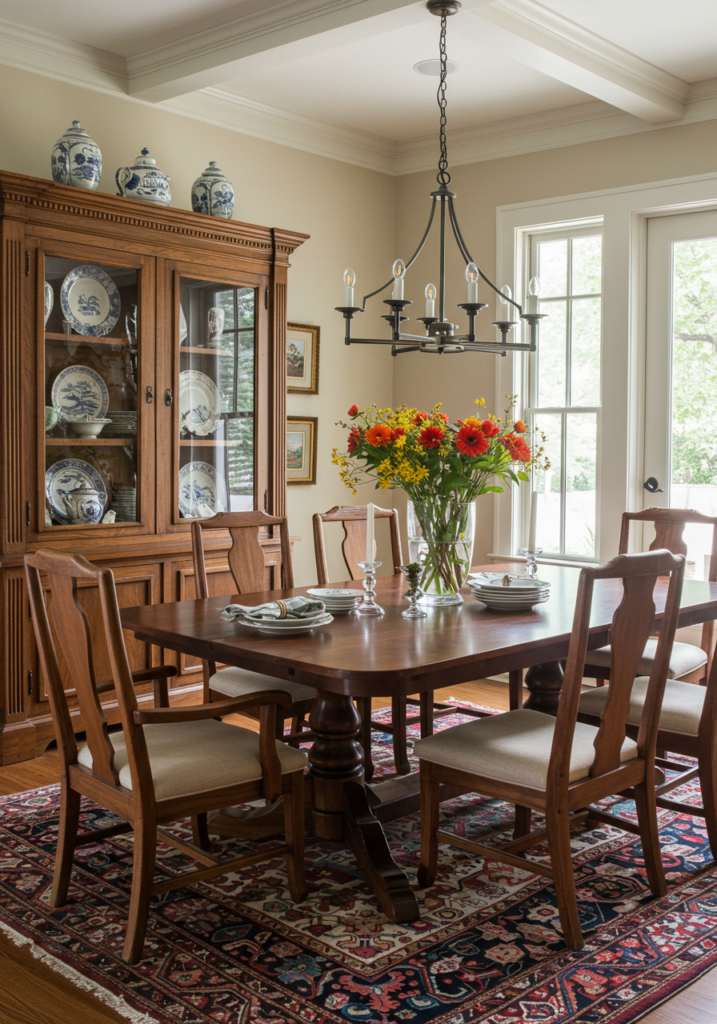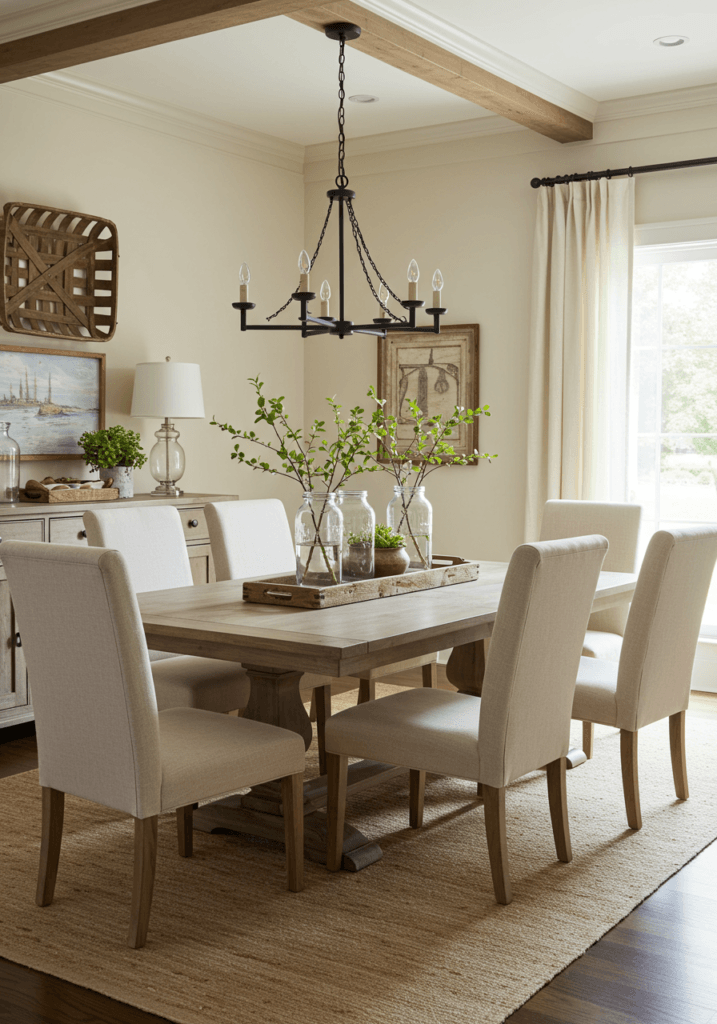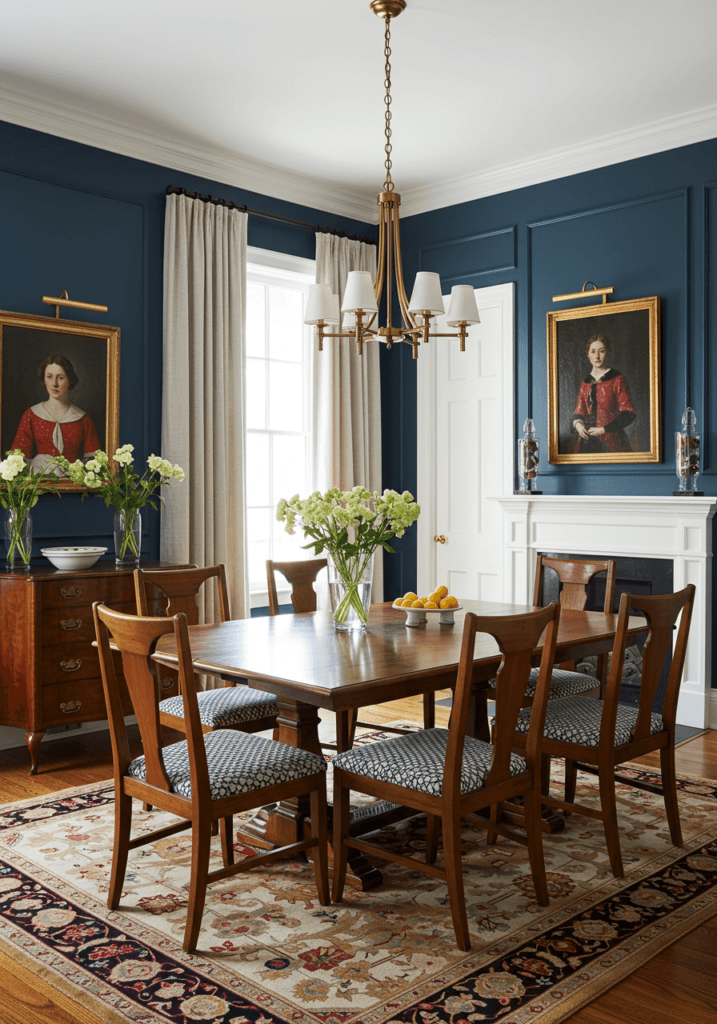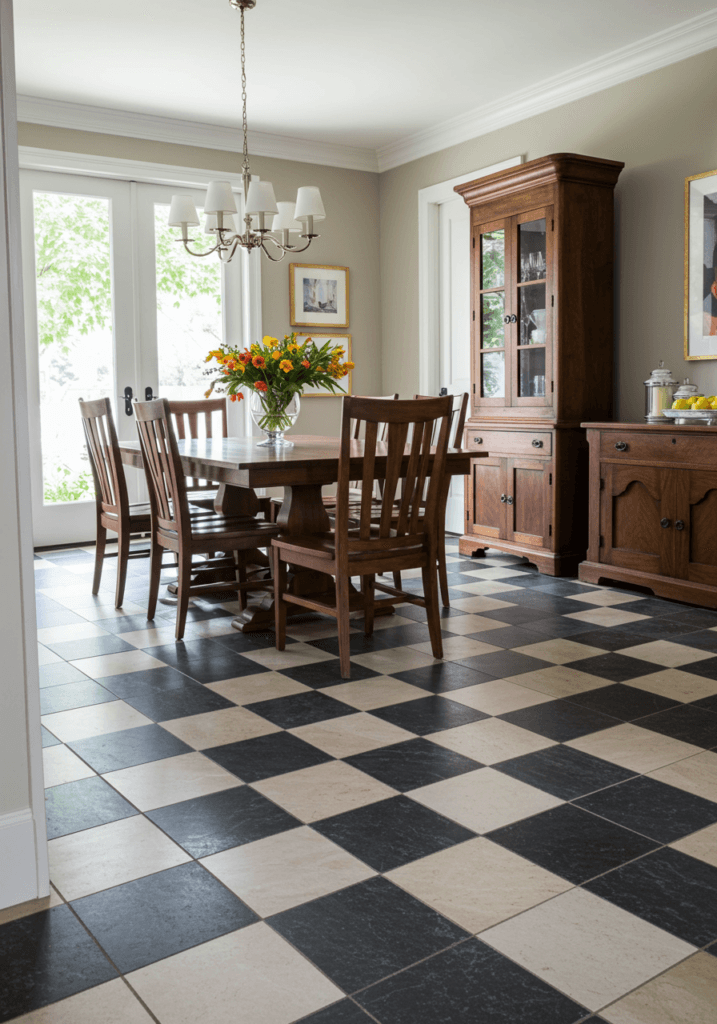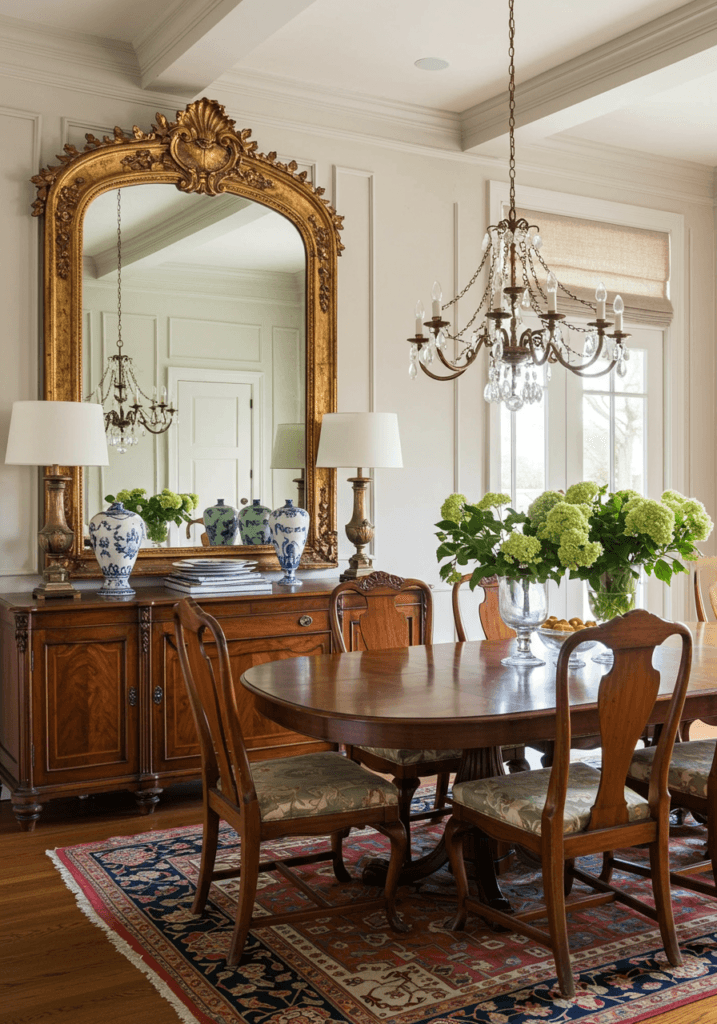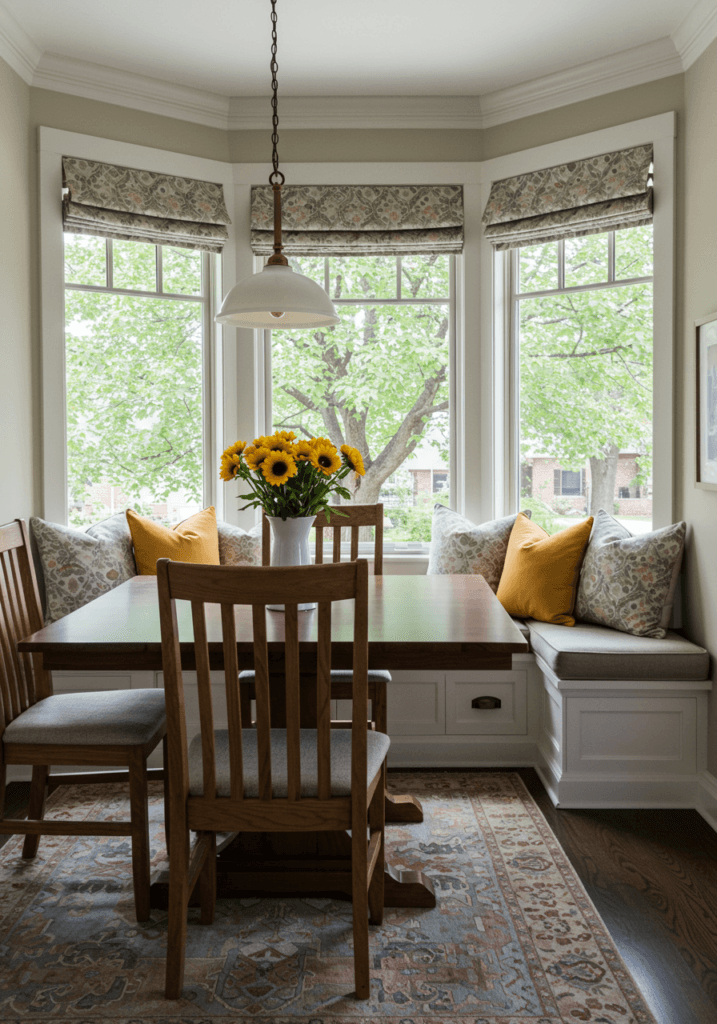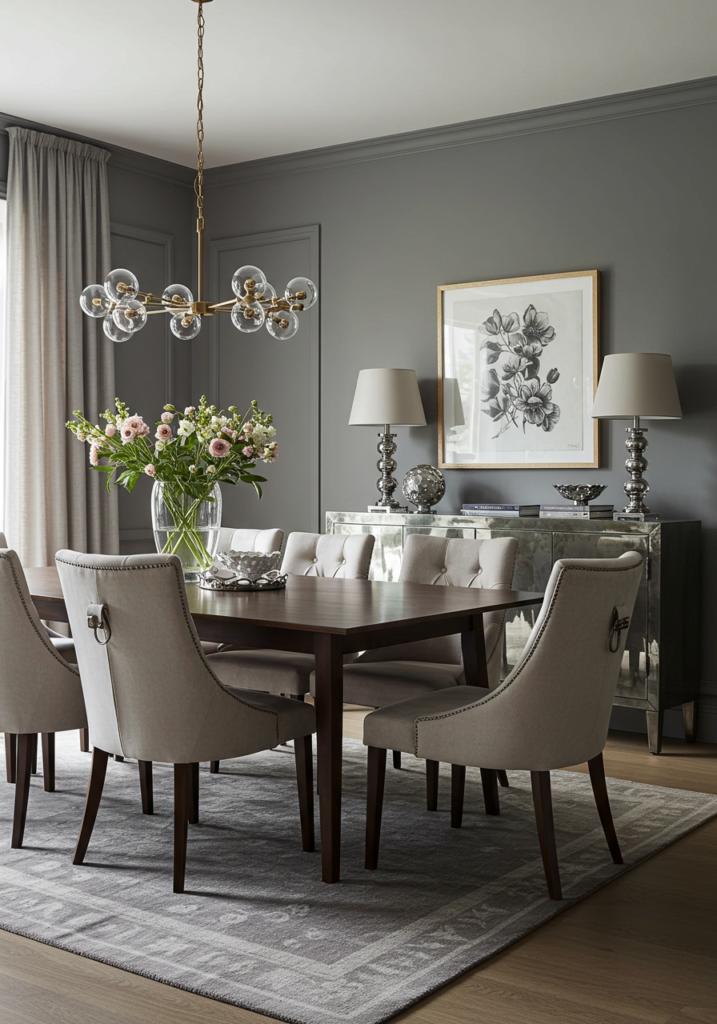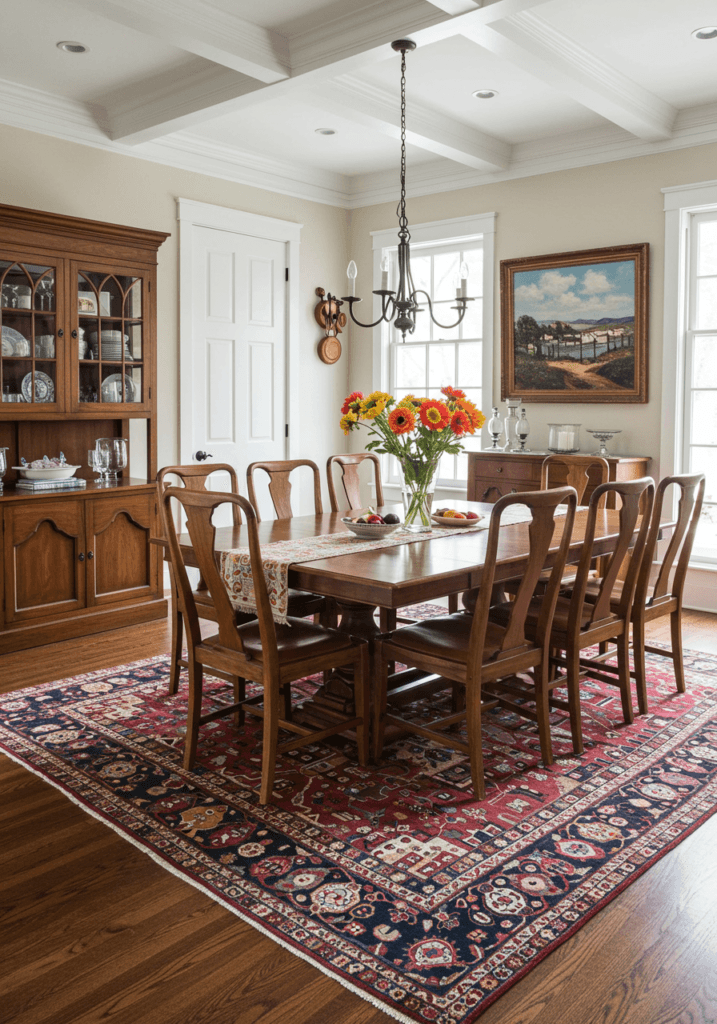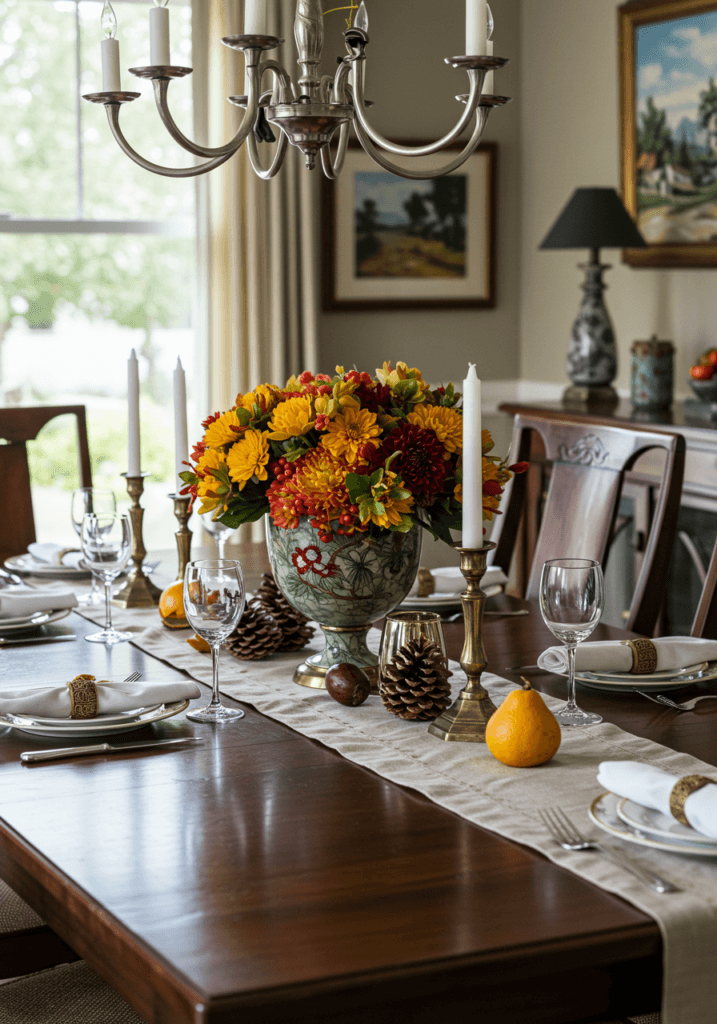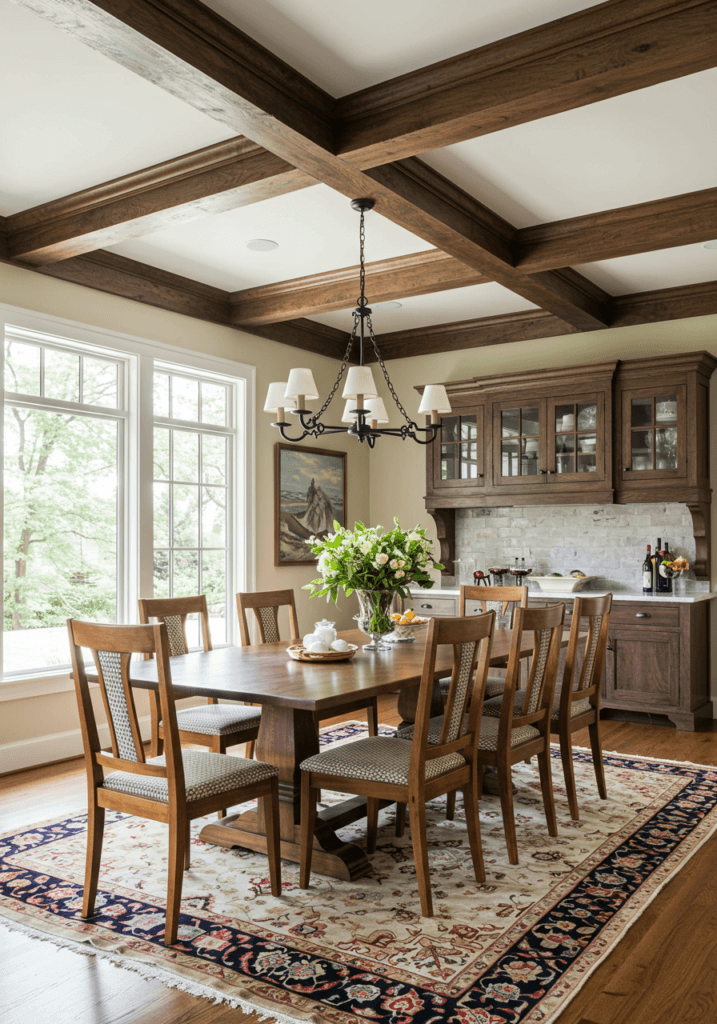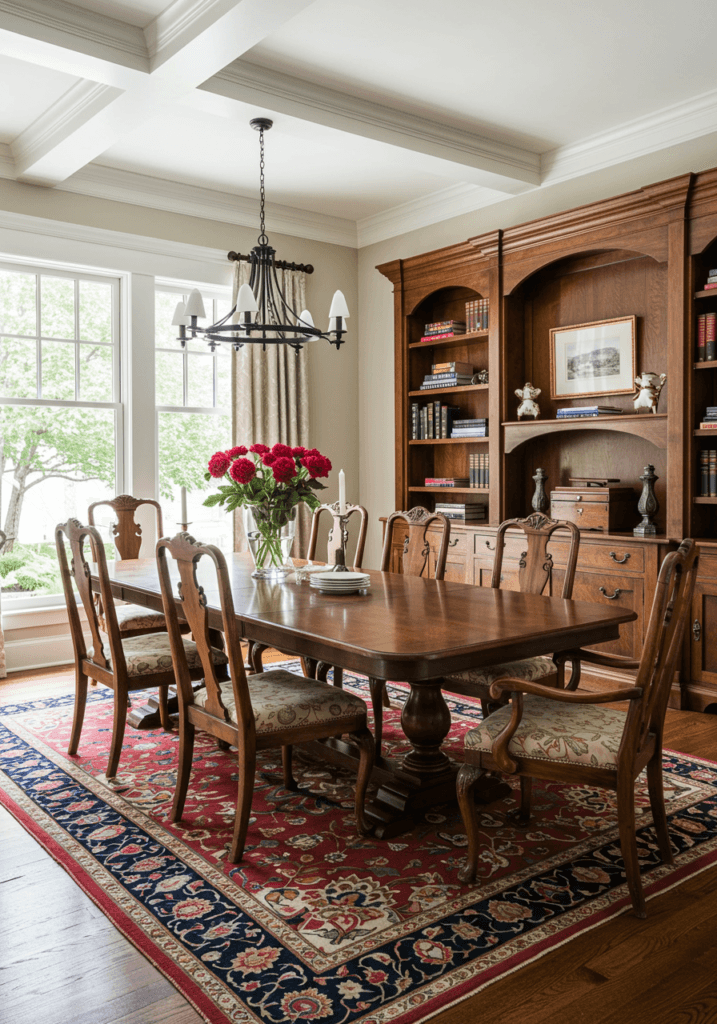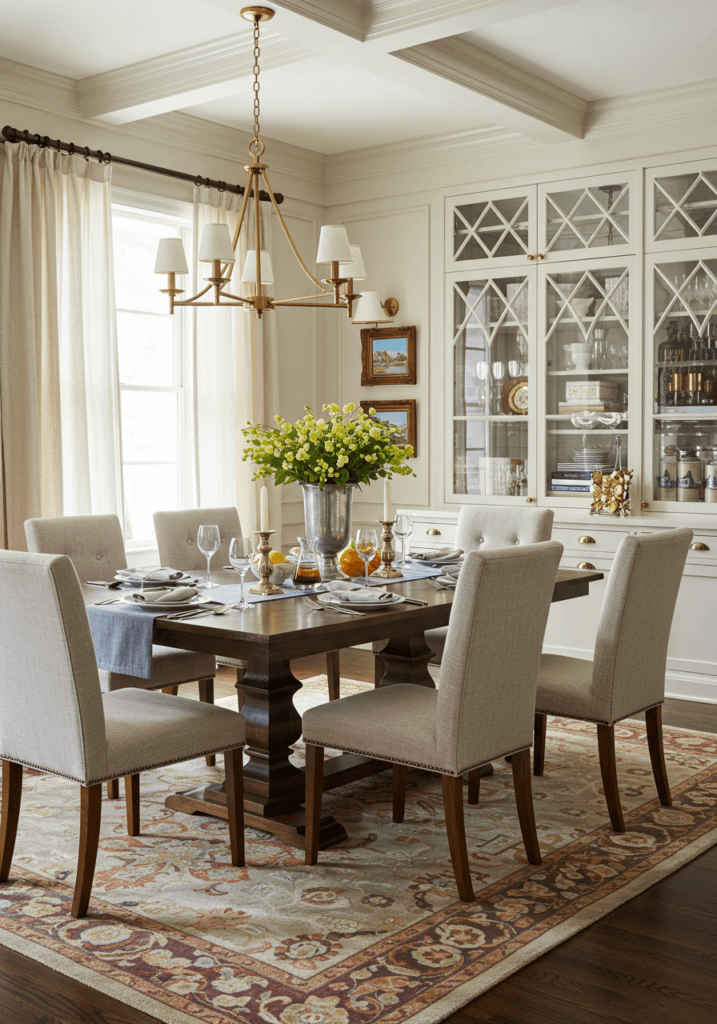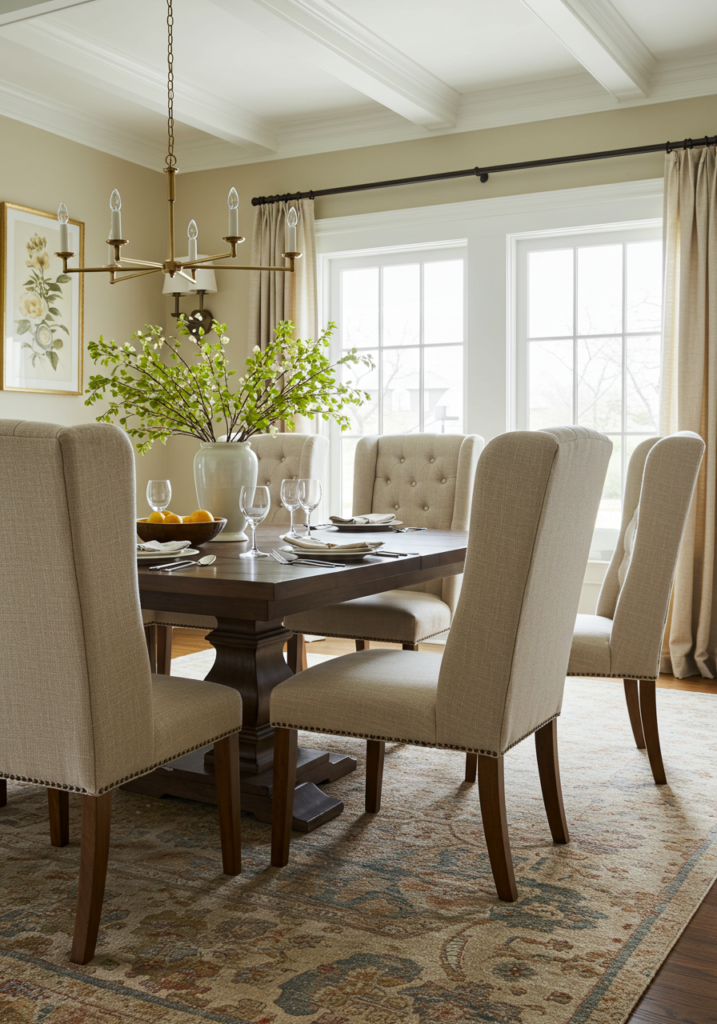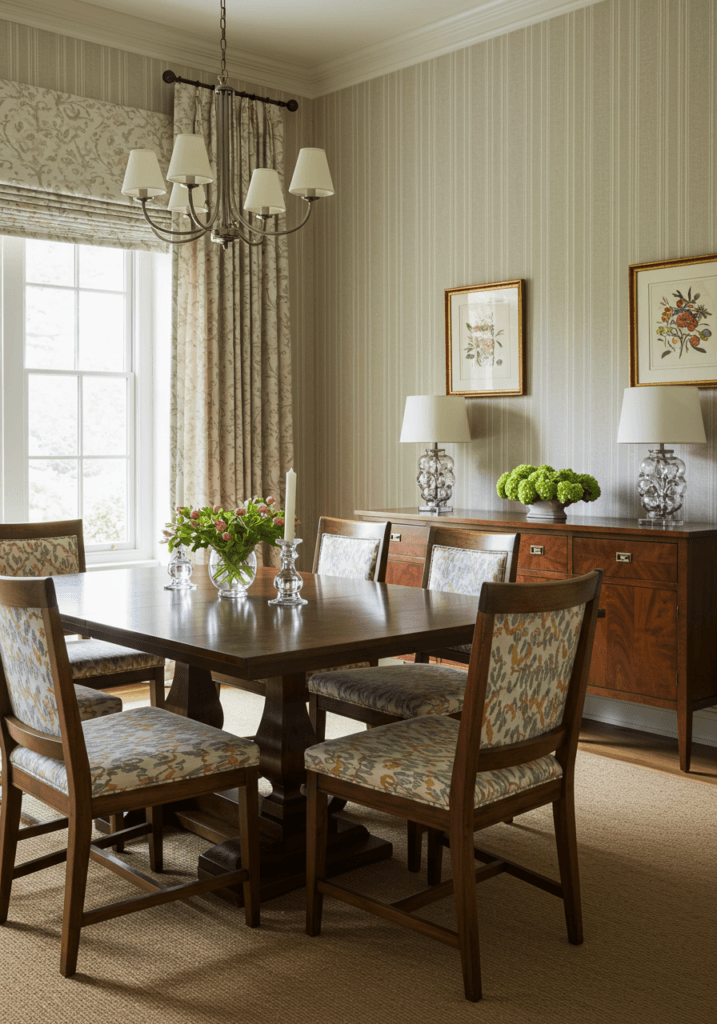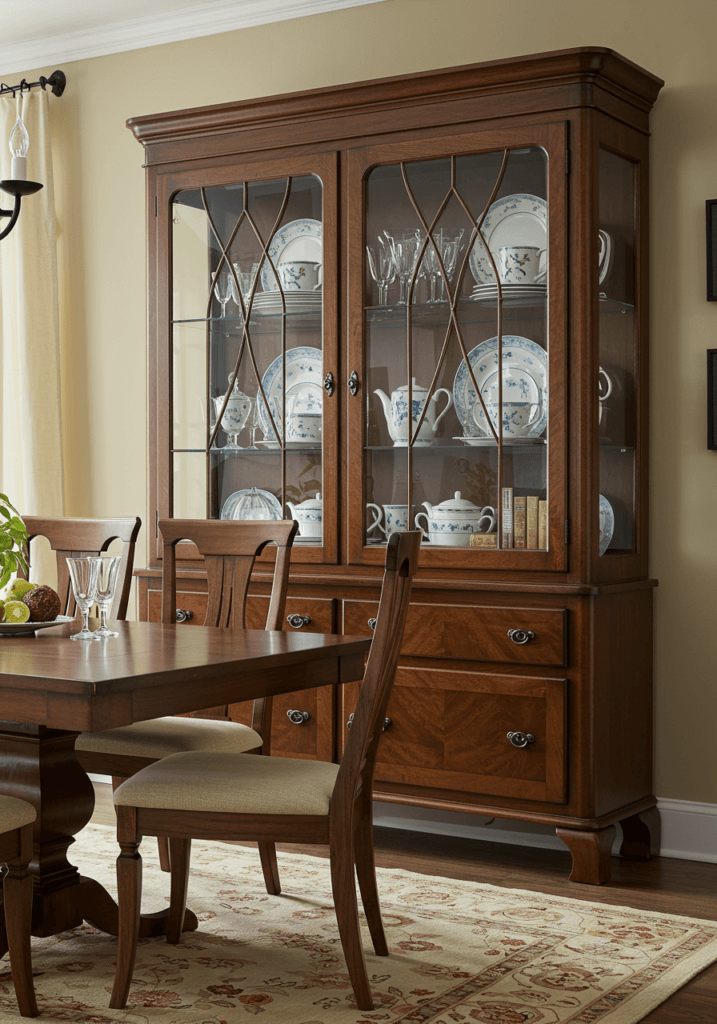When it comes to creating a timeless and elegant space, traditional dining room designs offer a perfect blend of sophistication and comfort. These designs often feature classic elements like rich wood tones, intricate moldings, and luxurious fabrics, making them ideal for those who appreciate a refined aesthetic. Whether you’re hosting a formal dinner or enjoying a casual meal, a traditional dining room can transform your home into a warm and inviting haven. Let’s explore 11 stunning ideas to inspire your next interior design project.
1. Classic Elegance with Dark Wood Furniture
Dark wood dining tables and chairs are a hallmark of traditional design. Opt for pieces with intricate carvings and polished finishes to create a sense of grandeur. Pair these with a crystal chandelier and soft, neutral walls to balance the richness of the wood. This combination exudes timeless elegance and works well in larger spaces where the furniture can truly shine.
2. Warm and Inviting with Neutral Tones
Neutral color palettes, such as beige, cream, and taupe, are a staple in traditional dining rooms. These hues create a calming atmosphere, allowing the furniture and decor to take center stage. Layer textures with upholstered chairs, a plush rug, and flowing drapes to add depth and warmth. This design is perfect for those who want a cozy yet sophisticated dining area.
3. Statement Lighting with Chandeliers
A chandelier is more than just a light source; it’s a focal point in traditional dining rooms. Choose a design with crystal accents or ornate metalwork to enhance the room’s elegance. Position it above the dining table to create a balanced and harmonious look. The right chandelier can elevate the entire space, making it feel luxurious and inviting.
4. Rich Textiles for Added Luxury
Incorporate luxurious fabrics like velvet, silk, or brocade into your dining room design. Use these materials for chair upholstery, curtains, or even table runners. The tactile quality of these textiles adds a layer of opulence, making the room feel more refined and comfortable. Pair them with subtle patterns to avoid overwhelming the space.
5. Timeless Wall Paneling and Moldings
Wall paneling and decorative moldings are key elements of traditional dining rooms. They add architectural interest and a sense of history to the space. Consider wainscoting or raised paneling for the lower half of the walls, paired with a contrasting paint color above. Crown molding and ceiling medallions can further enhance the room’s classic appeal.
6. Formal Table Settings with Fine China
A traditional dining room isn’t complete without a beautifully set table. Invest in fine china, crystal glassware, and polished silverware to create a formal dining experience. Layer the table with a crisp tablecloth, elegant placemats, and a centerpiece like fresh flowers or candles. This attention to detail will impress your guests and elevate every meal.
7. Antique Accents for Character
Incorporate antique pieces, such as a vintage sideboard or a grandfather clock, to add character and charm to your dining room. These items tell a story and bring a sense of history to the space. Mix them with modern elements to create a balanced look that feels both timeless and fresh.
8. Layered Lighting for Ambiance
In addition to a chandelier, consider adding sconces or table lamps to create layered lighting. This approach allows you to adjust the ambiance based on the occasion. Dim the lights for a romantic dinner or brighten them for a lively gathering. Proper lighting is essential for setting the right mood in a traditional dining room.
9. Patterned Wallpaper for Visual Interest
Wallpaper with subtle patterns, such as damask or toile, can add visual interest without overwhelming the space. Choose a design that complements the room’s color scheme and furniture. Wallpaper is an excellent way to infuse personality into your dining room while maintaining a traditional aesthetic.
10. Symmetrical Layouts for Balance
Symmetry is a key principle in traditional design. Arrange your furniture and decor in a balanced manner to create a harmonious look. For example, place matching sideboards or cabinets on either side of the room and center the dining table beneath the chandelier. This approach creates a sense of order and elegance.
11. Personal Touches with Family Heirlooms
Finally, incorporate family heirlooms or personal mementos into your dining room design. Whether it’s a cherished painting, a vintage rug, or a set of inherited dishes, these items add a unique touch to the space. They make the room feel more personal and connected to your family’s history.
12. Rustic Charm with Farmhouse Elements
Combine traditional design with rustic farmhouse elements for a cozy yet sophisticated dining room. Use a reclaimed wood dining table, paired with upholstered chairs in neutral tones. Add a touch of warmth with a wrought-iron chandelier and vintage-inspired decor like mason jar centerpieces or woven baskets. This style is perfect for those who love a relaxed, homey feel with a touch of elegance.
13. Bold Accent Walls for Drama
While traditional dining rooms often feature neutral tones, a bold accent wall can add a dramatic focal point. Consider deep hues like navy blue, emerald green, or burgundy. Pair the accent wall with classic white moldings and traditional artwork to maintain a balanced look. This design choice adds depth and personality to the space without straying from the traditional aesthetic.
14. Elegant Built-In Cabinetry
Built-in cabinetry is a practical and stylish addition to any traditional dining room. Use it to display fine china, glassware, or decorative items. Opt for cabinets with glass doors and interior lighting to highlight your collections. This feature not only adds storage but also enhances the room’s architectural appeal.
15. Timeless Checkered Floors
A checkered floor, whether in black and white or muted tones, is a classic element in traditional dining rooms. This pattern adds visual interest and pairs beautifully with rich wood furniture and neutral walls. For a modern twist, consider using large-format tiles or a subtle variation in the pattern.
16. Grand Mirrors for Reflection and Light
Large mirrors are a staple in traditional design, as they reflect light and make the space feel larger. Choose an ornate mirror with a gilded or wooden frame to hang above a sideboard or buffet. This addition not only enhances the room’s elegance but also creates a sense of openness.
17. Cozy Window Seats with Cushions
If your dining room has a bay window or large windows, consider adding a built-in window seat with plush cushions. This feature provides additional seating and creates a cozy nook for casual meals or relaxation. Use fabrics that complement the room’s color scheme for a cohesive look.
18. Monochromatic Color Schemes
A monochromatic color scheme, such as varying shades of gray or beige, can create a sophisticated and harmonious dining room. Use different textures and finishes to add depth and interest. For example, pair a matte gray wall with a glossy dining table and velvet chairs. This approach keeps the space feeling unified and elegant.
19. Vintage Rugs for Warmth and Texture
A vintage or Persian rug can anchor your dining room and add a layer of warmth and texture. Choose a rug with intricate patterns and rich colors that complement your furniture. Ensure the rug is large enough to accommodate the dining table and chairs, even when pulled out.
20. Formal Centerpieces for the Table
A beautifully arranged centerpiece can elevate your dining table and set the tone for meals. Use fresh flowers, candles, or a combination of both in a decorative vase or candelabra. Seasonal elements like pinecones or autumn leaves can add a festive touch. Keep the centerpiece low to avoid obstructing views across the table.
21. Classic Ceiling Beams for Architectural Interest
Exposed wooden ceiling beams are a stunning addition to traditional dining rooms, especially in homes with high ceilings. They add a rustic yet elegant touch and enhance the room’s architectural character. Pair them with a chandelier or pendant lights for a balanced look.
22. Dual-Purpose Dining Rooms
If your dining room serves multiple purposes, such as a home office or library, incorporate traditional design elements that suit both functions. Use a large dining table that can double as a workspace and add bookshelves or a writing desk. This approach ensures the space remains functional without sacrificing style.
23. Subtle Metallic Accents for Glamour
Incorporate subtle metallic accents, such as gold, silver, or brass, to add a touch of glamour to your dining room. Use these accents in light fixtures, picture frames, or tableware. Avoid overdoing it—just a few well-placed metallic elements can elevate the room’s elegance.
24. Classic Wingback Dining Chairs
Wingback chairs are a timeless addition to any traditional dining room. Their tall backs and upholstered seats add a touch of sophistication and comfort. Choose fabrics like velvet or linen in neutral or rich tones to complement your dining table. These chairs work particularly well at the heads of the table, creating a focal point.
25. Subtle Stripes for a Refined Look
Incorporate striped patterns into your dining room through wallpaper, upholstery, or curtains. Vertical stripes can make the room feel taller, while horizontal stripes add width. Stick to subtle, muted tones to maintain the traditional aesthetic. Stripes are a versatile way to add visual interest without overwhelming the space.
26. Glass-Front China Cabinets
A glass-front china cabinet is both functional and decorative, allowing you to showcase your finest dinnerware and glassware. Choose a cabinet with intricate woodwork and glass panels to enhance the room’s traditional appeal. Style the shelves with a mix of china, books, and decorative objects for a curated look.



